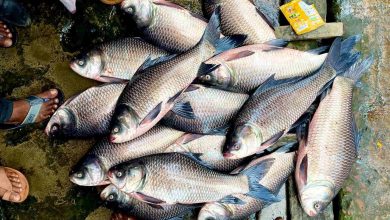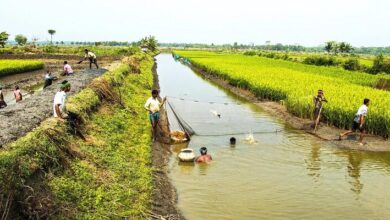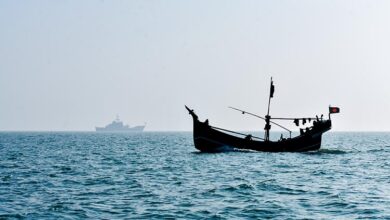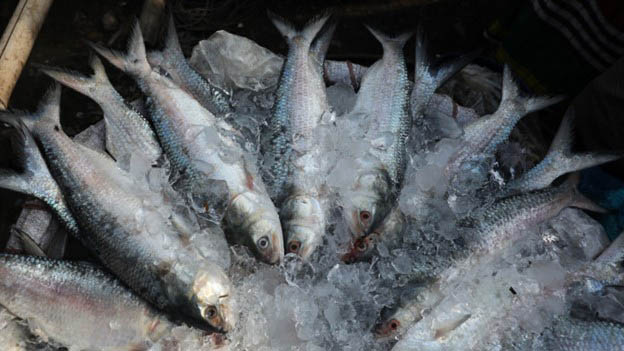
In recent years, hilsa production has decreased year-over-year despite an upward trend in total catch. There are several reasons for this, including illegal netting of jatka hilsa, widespread use of banned gillnet, and erratic rainfall caused by climate change.
Bangladesh produces most of the world’s hilsa. Although there should have been plenty of hilsa in June-July this year, the growth rate has been declining in recent months, and its scarcity has raised some concerns.
It is estimated that at least 566,000 tons of hilsa were captured in fiscal 2021-22. There was 565,000 lakh tons and 550,000 tons amount in the previous two years. In fiscal 2018-19, hilsa yield was 532,000 lakh tons. This indicates a poor annual yield growth.
In FY 2019-20, the growth rate was 3.3 percent and in FY 2020-21, it was 2.68 percent. In 2021-22, growth slowed even further to 0.25 percent. Data for FY 2022-23 have not yet been released by the DoF.
Bangladesh’s hilsa fishery is under threat from human-driven factors and climate change, according to researchers.
On the other hand, Government officials are disagreeing with the decline of Hilsa production.
“We aren’t seeing any decline in the yield of hilsa,” said Masud Ara Momi, a fisheries officer at DoF Headquarters. A few statistics have already been released, according to her.
Despite the government’s claims of increased production following conservation initiatives over the past year, the actual situation differs. This season, fishermen say they are catching fewer hilsa, particularly around the Meghna estuary and the Sundarbans.
Dulal, a fisherman from this ghat, said, “We used to send eight to ten large baskets of hilsa to Dhaka every day. But this year, we only sent two to three baskets,” after fishing for two or three days.
Numerous causes have been suggested by experts as to why Hilsa’s production growth rate is declining.
One of the major reasons might be the illegal, Unreported, unregulated catching of hilsa from numerous areas of the country.
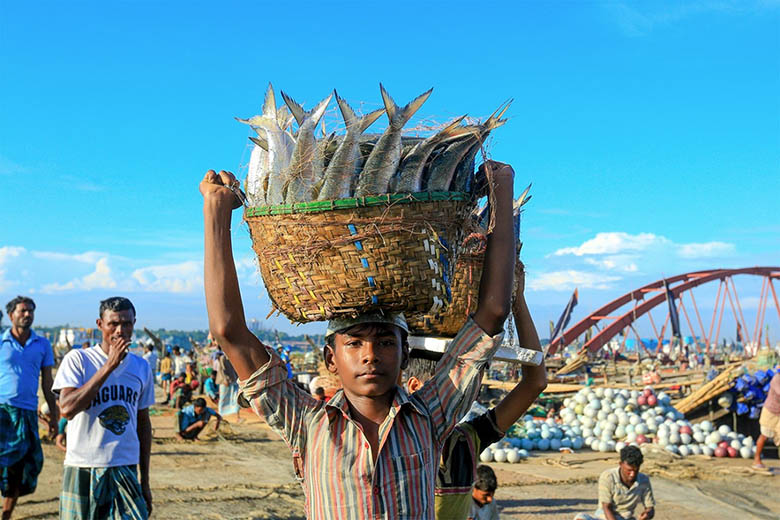
Photo: Muhammad Mostafigur Rahman.
The illegal jatka netting alone resulted in the loss of more than 58,000 tons of mature hilsa in 2021. According to Bangladesh Fisheries Research Institute (BFRI), gillnets used at river estuaries act as the biggest obstacle to brood hilsa coming from sea and laying eggs in rivers.
According to BFRI, the illegal catching of jatka resulted in the destruction of 58,800 tons of hilsa in 2021.
“Assuming the unit price is US $10 per kg, the country lost about US $58.80” said an official of BFRI.
This figure was found after surveying ten landing stations, including Mahipur and Khepupara of Patuakhali, Patharghata of Barguna, and Monpura and Daulatkhan of Bhola.
Another reason for the decline of hilsa might be the lack of monitoring and management. Fishermen especially take advantage of the banning period to catch hilsa.
As a result of lax enforcement of the ban, some fishermen still catch hilsa using gillnets, contributing to the dwindling growth of this fish.
Some of the people involved in the hilsa business pointed fingers at law enforcement officials. According to them, government measures won’t be effective as long as the protectors keep working like predators.
In addition, river police take bribes from fishermen to allow them to use banned gillnets all year long, said the guard who has been fishing for more than 20 years.
According to Moksed, another fisherman-cum-guard from Patuakhali, some unscrupulous fishermen use gillnets to catch small fish in small rivers and canals late in the afternoon and early in the morning so they can avoid arrest.
The decline of the hilsa is also significantly influenced by pollution. The migration of fish seems to increase as the water becomes more contaminated.
According to Mollah Samsur Rahman Shaheen, president of Khulna Kendria Matshyajibi Samiti, the water has become more polluted in recent years. The water flow has changed as well. I guess the reasons are multifaceted,” he says.
SRDI (Soil Resources Development Institute) of Bangladesh notes that river salinity increases as sea level rises, harming anadromous species’ reproduction. For juvenile hilsa, relocating spawning grounds downstream impacts their survival chances as well.
However, earlier the government has taken numerous steps to solve this crisis.
The government bans netting of hilsa and other endangered fish species twice a year in order to increase fish production. From March 1 to May 31, the first ban of the year is in place to protect the growing fries. During the second ban, which starts on October 1, brood hilsa and other fish species will be allowed to lay eggs. Additionally, gillnets, a small-mesh net made of monofilament synthetic nylon fiber that catches large numbers of fish, have been banned in the country since 2001 to prevent indiscriminate fishing.
Furthermore, the DoF distributed 10,000 authorized nets and created alternative employment opportunities for 30,000 affected fishermen families during the ban periods to protect jatka and hilsa broods.
In order to monitor illegal fishing and inform local fisheries offices, some fishermen are hired as guards for a monthly salary of Tk 10,000. Additionally, they encourage their fellow fishermen not to catch fish during the ban.
In addition, the fisheries department launched the Hilsa Development and Management Project in 2020, worth about US $24 million. When the project reaches its expiration in June 2024, hilsa yield is expected to increase by 16%.
Jaber Bin Abdul Bari
Department of Oceanography, NSTU


